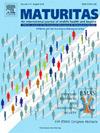Changes in proteinuria and the risk of urogenital cancer in Korean men
IF 3.6
2区 医学
Q2 GERIATRICS & GERONTOLOGY
引用次数: 0
Abstract
Objective
This study investigates the association between changes in proteinuria and the incidence of urogenital cancer (prostate, kidney, and bladder cancer) in Korean men.
Methods
We analyzed data from 1,225,646 Korean men who underwent health check-ups in 2005–2006 and 2009. Proteinuria changes were categorized into four groups based on urine dipstick tests: persistently negative, resolved, incident, and persistent proteinuria. The relationship between these groups and the incidence of urogenital cancer over follow-up through to 2021 was assessed using multivariate Cox proportional hazards models.
Results
Persistent proteinuria was associated with the highest risk of urogenital cancer (hazard ratio (HR) 1.323, 95 % confidence interval (CI) 1.190–1.472), followed by incident proteinuria (HR 1.155, 95 % CI 1.096–1.217). Kidney cancer risk was elevated in persistent (HR 2.312, 95 % CI 1.853–2.885), incident (HR 1.346, 95 % CI 1.171–1.546), and resolved (HR 1.293, 95 % CI 1.066–1.568) proteinuria groups. Bladder cancer risk increased in the incident proteinuria group (HR 1.425, 95 % CI 1.289–1.576). Resolved proteinuria was linked to a reduced risk of prostate cancer (HR 0.878, 95 % CI 0.796–0.968).
Conclusion
The incidence of urogenital cancer was significantly higher for persistent proteinuria and (to a lesser degree) incident proteinuria than for persistently negative or resolved proteinuria. The risk of kidney cancer was similar to that of urogenital cancer, while other cancers had weaker associations with proteinuria. The results highlight the importance of monitoring proteinuria regularly for urogenital cancer risk assessment.
韩国男性蛋白尿的变化与泌尿生殖系统癌的风险
目的:本研究探讨韩国男性蛋白尿变化与泌尿生殖系统癌(前列腺癌、肾癌和膀胱癌)发病率之间的关系。方法:我们分析了2005-2006年和2009年接受健康检查的1,225,646名韩国男性的数据。蛋白尿变化根据尿试纸试验分为四组:持续阴性、消退性、偶发性和持续性蛋白尿。使用多变量Cox比例风险模型评估这些组与随访至2021年的泌尿生殖系统癌发病率之间的关系。结果:持续性蛋白尿与泌尿生殖系统癌的最高风险相关(风险比(HR) 1.323, 95%可信区间(CI) 1.190-1.472),其次是偶发性蛋白尿(HR 1.155, 95% CI 1.096-1.217)。持续性蛋白尿组(HR 2.312, 95% CI 1.853-2.885)、偶发性蛋白尿组(HR 1.346, 95% CI 1.171-1.546)和消退性蛋白尿组(HR 1.293, 95% CI 1.066-1.568)肾癌风险升高。蛋白尿组膀胱癌风险增加(HR 1.425, 95% CI 1.289-1.576)。解决蛋白尿与前列腺癌风险降低相关(HR 0.878, 95% CI 0.796-0.968)。结论:与持续阴性或解决的蛋白尿相比,持续性蛋白尿和(在较小程度上)偶发性蛋白尿的泌尿生殖系统癌发病率明显更高。肾癌的风险与泌尿生殖系统癌相似,而其他癌症与蛋白尿的关联较弱。结果强调了定期监测蛋白尿对泌尿生殖系统癌风险评估的重要性。
本文章由计算机程序翻译,如有差异,请以英文原文为准。
求助全文
约1分钟内获得全文
求助全文
来源期刊

Maturitas
医学-妇产科学
CiteScore
9.10
自引率
2.00%
发文量
142
审稿时长
40 days
期刊介绍:
Maturitas is an international multidisciplinary peer reviewed scientific journal of midlife health and beyond publishing original research, reviews, consensus statements and guidelines, and mini-reviews. The journal provides a forum for all aspects of postreproductive health in both genders ranging from basic science to health and social care.
Topic areas include:• Aging• Alternative and Complementary medicines• Arthritis and Bone Health• Cancer• Cardiovascular Health• Cognitive and Physical Functioning• Epidemiology, health and social care• Gynecology/ Reproductive Endocrinology• Nutrition/ Obesity Diabetes/ Metabolic Syndrome• Menopause, Ovarian Aging• Mental Health• Pharmacology• Sexuality• Quality of Life
 求助内容:
求助内容: 应助结果提醒方式:
应助结果提醒方式:


